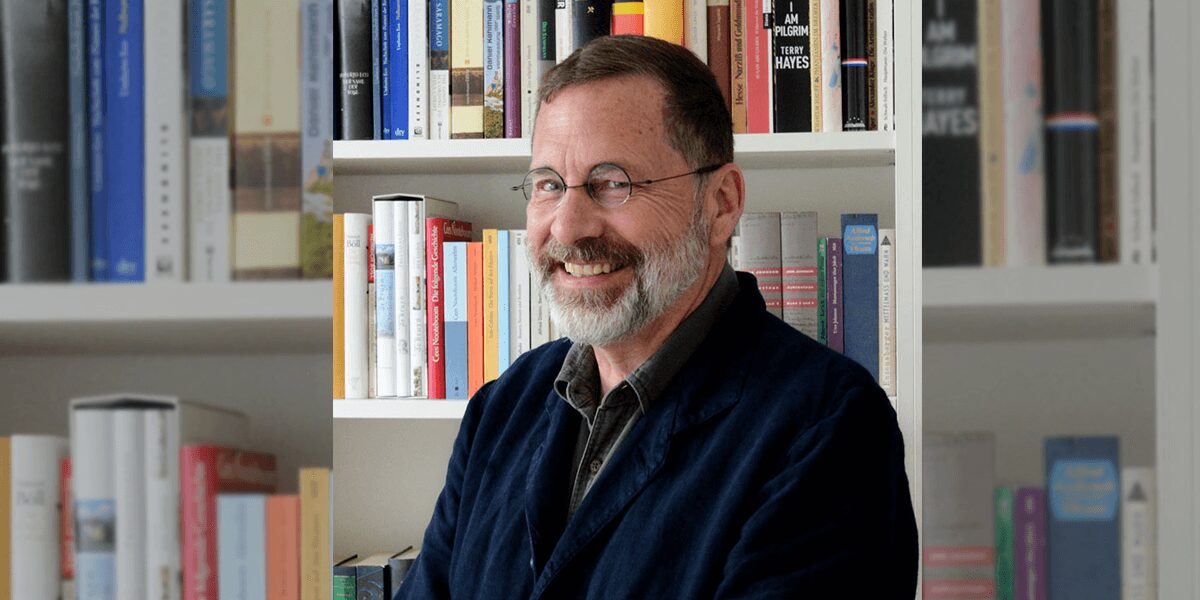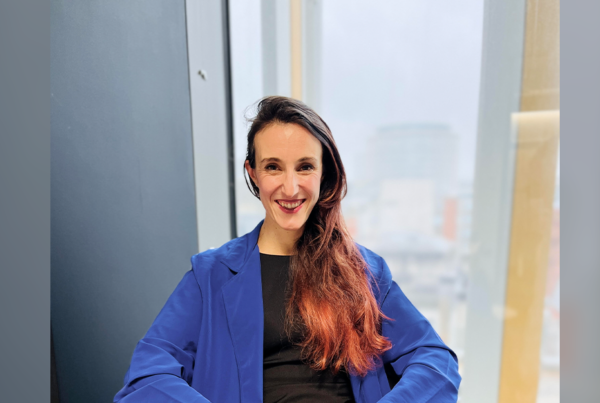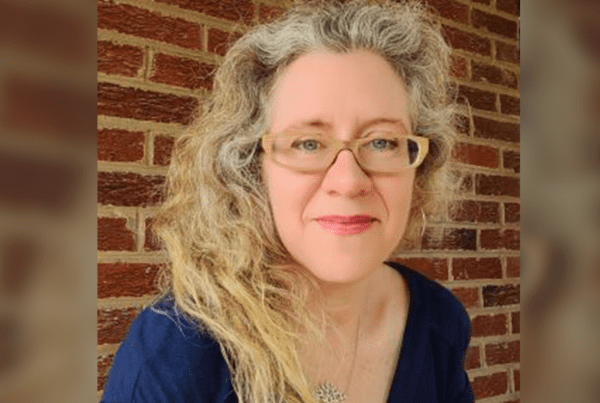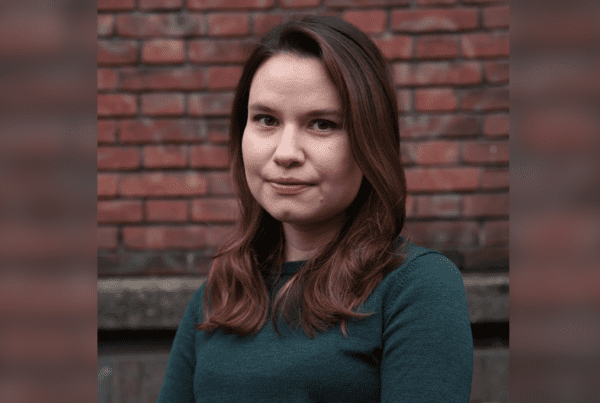Steven, you have been working for years on media ecosystems and their role in our liberal democracies. You recently co-edited The Disinformation Age in 2019 and are currently leading a project supported by Social Science Research Council/Institute for Data, Democracy, and Politics that looks at the causes of democratic backsliding. Can you tell us about the role that media, but also corporate actors and politicians themselves, have played in deconstructing, or at least weakening, some of the foundations of a democratic order? What is the role of media or the information ecosystem in this process?
For good reason, quite a lot of scholarly attention has been paid to the role of social technologies in the erosion of liberal democracy. According to this explanation, reasoned deliberation is undermined by algorithmically amplified extremist content. The goal of social media corporations is to hold user attention, not promote reasoned debate. The best way to hold user attention is with content that, with each new recommendation, scales up in extremism. The experience of staying with content creates data that are used to create predictions of future behavior. These predictions offer a new kind of product, what Shoshana Zuboff calls behavior surplus. Social media corporations then sell that product to other corporations as targeted advertising opportunities.
There is considerable merit to this explanation. Extremist content is a feature, not a bug, of the social media business model. Yet an important part of a broader explanation missing from the singular focus on the role of algorithms in democratic backsliding is the historical, social, and the economic context in which the algorithms operate. Social cohesion, or the lack thereof, is the result of historical, social, and economic conditions. Variations in social and historical context matter as much as do the algorithms. Americans’ declining faith in democracy and deep social divisions offer fertile ground. “The biggest challenge to the (international liberal) system is the domestic basis of American power,” said Ivo Daalder, the president of the Chicago Council on Global Affairs. “It’s still the only global military power, it’s still the largest economy and it’s the only power that brings other countries together. The question is: Does domestic politics allow America to play that leadership role?” Variation in social cohesion, or social capital, matter, as does the erosion of trust in authoritative institutions.
To understand disinformation and it’s broad embrace by many Americans, and by others around the world, one must consider the sources of erosion of trust in authoritative institutions, including science, mainstream journalism, the regulatory state. Here again, social media platforms such as Facebook and Twitter contribute to the decline of authoritative institutions, perhaps especially traditional news organizations owing to the siphoning-off of advertising revenue, but they are not singularly responsible for it. One source of erosion are institution’s own organic failures. Military actions predicated on false claims, such as the U.S. invasion of Iraq in 2003, or 20 years of war in Afghanistan ending with the Taliban in control after a hasty U.S. withdrawal, certainly did not inspire confidence in the state. Yet a complete explanation must also focus on the rise of a bevy of libertarian thinktanks, university research programs, and astroturf organizations dedicated to undermining science, mainstream news organizations, civil society organizations, and the regulatory state. This has been going on for decades. Donald Trump’s refrain about fake news was preconditioned by decades of Rush Limbaugh and other far right commentators referring to liberal media or the lamestream media. It isn’t just a matter of algorithms, politics matter, too.
Social media platforms such as Facebook and Twitter contribute to the decline of authoritative institutions, perhaps especially traditional news organizations owing to the siphoning-off of advertising revenue, but they are not singularly responsible for it. One source of erosion are institution’s own organic failures.
The liberal script is challenged by many different forces, top-down and bottom-up, at home and abroad. You have been exploring the role of religious narratives in either supporting or challenging the liberal narrative in its European version. This is an issue you explored as a Fulbright Scholar at the Centre of Excellence in Law, History, and European Narratives at the University of Helsinki. It seems there is a growing use of a ‘cultural Christianity’ to oppose multiculturalism. What are your main findings on this interaction between religion and (il)liberalism?
How do we explain the stickiness of factually unsupported beliefs? An abundance of evidence tells us that the 2020 election was very secure. Even President Donald Trump’s own Justice Department concluded the 2020 election was a free and fair. Yet a December 2021 poll conducted by the University of Massachusetts found that only 21 percent of Republicans say Joe Biden’s victory was legitimate. That figure was almost identical to the results of an April 2021 poll that found only 19 percent of Republicans said Biden was legitimately elected. Identical results have been found by media outlets and polling firms. How do we explain these polling results? Other conspiracy theories are equally allergic to facts. QAnon, the idea that there is a global pedophilia ring run by Democrats and Hollywood elites, not to mention shapeshifting lizard people, has grown despite its absurdity. What is going on here?
Much of contemporary political communication and political psychology research is based on an information processing model rooted in cognitive psychology. It is fair to say that this approach understands disinformation as an individual information processing failure. Because of motivated reasoning and selective exposure, individuals fail to update factually unsound beliefs. The first is the mental habit of subtly dismissing information that runs contrary to existing beliefs and a tendency to uncritically embrace information that supports them. Selective exposure occurs when we select supportive information (such as the information found on news channels or websites) and avoid information sources that challenge existing beliefs.
This is an insightful and important line of well-established research. Yet it is limited by its tendency to focus on individuals in isolation, rather than as social beings in search of meaning, purpose, and community. Reviewing the religious iconography on display at the U.S. Capitol on January 6th leads one to conclude that religiosity is an important vehicle for the search of meaning.
While it might be the case that Europe has been spared the same sort of religion-tinged violence as seen in the United States, in a handful of European nations religious identity has come to play a central role in shaping political governance. The role of the Catholic Church in Poland under the Law and Justice Party illustrates the point. And Hungary under Viktor Orbán’s leadership has even been declared a “Christian democracy.” Orbán has himself taken on an outsized role in American traditionalist conservative politics and intellectual circles. Prominent television personalities and American political philosophers now visit him in Budapest. A GOP-aligned political organization is even slated to hold a conference in Hungary in 2022. For some on the American right, Hungary offers a post-liberal ideal. Regarding Russia, historian Timothy Snyder has traced the relationship between Putinism and the Russian Orthodox Church. In this way, one might argue that Christian nationalism in Hungary, Russia, and Poland is involved in the greater violence against liberal democracy. They marry state power to an illiberal Christian ethos.
The sociology of religion scholarship helps us understand the role of faith-based belief systems (based on convictions, not empirical evidence) in politics. Over a century ago, Émile Durkheim observed that religion concerns the ways a given society coheres – forms community around — belief systems. In The Elementary Forms of Religious Life, he argues that religious belief systems are sustained by a “collective effervescence” – a shared sense of belonging to something larger than oneself. Similarly, in The Sacred Canopy, Peter Berger argues that religious ideation addresses fundamental questions of meaning. Religion is the way humans adopt an orderly understanding of the world and what constitutes proper personal conduct in it. Out of this emerges an inter-subjective sense of predictable order. These understandings, though social constructed and reconstructed, are to be understood as obvious, necessary, and inevitable. They constitute the stuff of an objective reality that rests beyond our ability to change it. The same holds true of the roles each of us play in society; we are who we are, and do as we do because it is obvious, even God-given.
The challenge with belief systems that have the character of a religion is that they are not about facts or evidence; they are about faith and convictions.
Which is to say that for society to work effectively, we must feel that our identity depends on playing those roles well. The internalization of expectations helps shield us against the terror of not knowing what goes with what, or what is to be expected of each of us in the next moment. During turbulent times when existing social orders are threatened by change, fears are heightened, and religious-like convictions are held to more fervently. Doing so provides: 1. Meaning, 2. Purpose, 3. Community, and 4. Ritual. Meaning involves universalist claims as to why the world looks as it does. Purpose involves a narrative about one’s personal role within a given system of meaning. Community involves sacramental spaces where major ritualistic milestones are instantiated. One’s community is an extension of kin relations; they are “like family.” Rituals are public acknowledgements of the sacred nature of a system of beliefs that provide meaning, offer purpose, and constitute community. They involve opportunities to send signals of devotion and loyalty to a given meaning system. Genuflecting before an altar, crossing oneself, and declaiming creeds offer examples. The challenge with belief systems that have the character of a religion is that they are not about facts or evidence; they are about faith and convictions. It seems that fact-checking and media literacy programs miss this point. This launches a new line of inquiry.
You have also worked on the role of what you call ‘digital surrogate organizations’ such as Breitbart or QAnon in the U.S. conservative mainstream. How do you explain the difficulties of classic conservatism to resist new ideational constructions coming from the far right? Are we at risk of seeing conservatism becoming illiberal, in the sense of not being able anymore to exist as a political force respecting the principles of plurality and alternance in power?
Democracy scholars — including Nancy Bermeo, Juan Linz, to Daniel Ziblatt and Steve Levitsky — have tried to sort out the causes of democratic consolidation and erosion. Daniel Ziblatt’s research has centered on the implications of what he calls the conservative dilemma. Conservative or center-right political parties are aligned with various sorts of economic elites – landed aristocrats in some cases, Nouveau riche capitalists in other cases. While such an alignment provided access to substantial material resources, conservative parties are disadvantaged in thriving democracies where votes matter. According to Ziblatt, and to the political scientists who have applied Ziblatt’s model to the GOP in the United States, there are two ways to resolve the dilemma: 1. Undermine majoritarian institutions through gerrymandering and voter suppression or 2. Change the subject.
This second option involves finding ways to assemble electoral coalitions based on non-economic issues, what Ziblatt calls cross-cutting cleavage issues. These are deeply felt identity issues often involving race, gender, nationality, and religion. Promoting cross-cutting cleavage issues requires partnerships with allied organizations, what Ziblatt calls surrogate organizations. Interest groups, civil society organization, some kinds of media organizations, single issue advocacy groups, and cultural institutions such as churches are examples of surrogate organizations. They assist conservative parties promote cross-cleavage issues. The NRA, for example, is a GOP surrogate organization that promotes gun ownership without regulation. Certain cultural institutions such as churches are also understood as surrogate organizations. Historically, surrogate organizations are best understood as conventional organizations. They occupy office buildings, have a fixed leadership structure, and a fixed identity. Social media platforms present the possibility of an alternative organizational form. It is sometimes called communication as organization. They are organizational functions existing in digital space.
This second option involves finding ways to assemble electoral coalitions based on non-economic issues, what Ziblatt calls cross-cutting cleavage issues. These are deeply felt identity issues often involving race, gender, nationality, and religion.
The basic functions of an organization – collective action – can be realized on social media platforms. This is sometimes called connective action. The organization and execution of Occupy Wall Street, the Arab Spring, the MeToo Movement, and the January 6th Insurrection are common examples of connective action, or collective action facilitated by digital networks. The principal difference between collective action by conventional organizations and connective action or communication as organization are costs. The principal distinguishing feature of organizing in digital space is the radical reduction in costs associated with collective action. Before the existence of social media platforms, largescale collective action required large staffs, complex logistics, and sufficiently large budgets. Thanks to digital networks, that is no longer the case.
The principal distinguishing feature of organizing in digital space is the radical reduction in costs associated with collective action.
What does this mean? The costs of organizing are carried by digital networks. Generally, this means organizing – collective action – can be accomplished at lower costs and in shorter timeframes. These are the advantages of digital technology. On the other hand, because digitally constituted organizations are liminal, generally leaderless, and unbound by such things like charters and mission statements – their very organic quality makes them difficult, if not impossible, to control. They lack a command-and-control authority structure. They are low cost and resilient but only partially controllable, or not at all controllable.
QAnon offers an example of a digitally surrogate organization, one that is now attached to the Republican Party, irrespective of the preferences of party leadership. QAnon networked morphology makes it difficult for the GOP to distance itself from QAnon and other similar far-right organizations that exist partly online. In Nancy Bermeo’s words, it makes the it difficult for the GOP to distance itself from violence or the threat of violence. “The strength that most of the major parties in all the failed democracies lacked was what we might call distancing capacity. By this I mean the strength to distance a party and its members from acts of violence and lawlessness” (p. 238). The GOP (and other center-right parties around the world) are pulled into illiberal terrain by the nature of organizations that exist, at least partially, online. They are “digital surrogate organizations.” What we cannot get to here owing to a lack of space is a consideration of how conventional organization and digitally constituted organization (such as QAnon) blend into various forms of hybrid organizations.
Globally, how would you assess the health and viability of the “European liberal narrative”? Do you see it challenged by the pandemic situation and the public health legislations that followed? Are anti-vax, anti-lockdown, anti-sanitary passes, and anti-science the new repertoires of action for illiberal movements once their main anti-immigration narratives have become mainstreamed?
If I were to have answered this question a week ago, I would be quite pessimistic. The Russian invasion of Ukraine has changed everything. As I noted above, uptake of conspiracy theories and disinformation occurs in a social context. Societies riven by social cleavages are susceptible to disinformation and conspiracy theories. The sources of social cleavages in Europe and the United States haven’t disappeared, but they have been subsumed by the threat posed by Putin’s war.
My last question is usually about concepts. Our program is called the Illiberalism Studies Program. Could you tell us whether you see any value in the use of that term compared to the more widespread notions of populism or far right?
This is a field littered with terms. Competitive authoritarianism or illiberal democracies? Democratic backsliding or democratic recession? Populism tends to be the go-to term for American journalists and pundits but in my view lacks precision. For me, in the 21st century, far-right illiberalism captures current world events. Data analyzed by V-Dem and other research institutes make it clear that most of the democratic backsliding occurs in liberal democracies being pulled into far-right illiberalism.
For me, in the 21st century, far-right illiberalism captures current world events.
Steven Livingston is a Non-Resident Senior Fellow at the Illiberalism Studies Program. He is also a Visiting Fulbright Professor at EuroStorie at the University of Helsinki as well as the Founding Director of the Institute for Data, Democracy, and Politics (IDDP) and Professor of Media and Public Affairs at the George Washington University. He also holds an appointment in the Elliott School of International Affairs. In 2019, he led GW’s successful bid for a $5 million grant to found IDDP. In 2021, Livingston is a Fulbright Scholar at the University of Helsinki in Finland where he holds a new special award of the Finish Fulbright Foundation called Seeking Solutions for Global Challenges. Over his 30-year career at GW, Livingston has served as the director of the Political Communication Program when it was a degree-granting entity within SMPA (1996 – 2002, 2004 – 2006). In 2004, he served as director of the School of Media and Public Affairs, a position held until August 2006. He also founded the Public Diplomacy Institute (PDI) at GW in 2000 and served as the chairman of the Board of Directors until 2008. PDI is now the Institute for Public Diplomacy and Global Communication.







